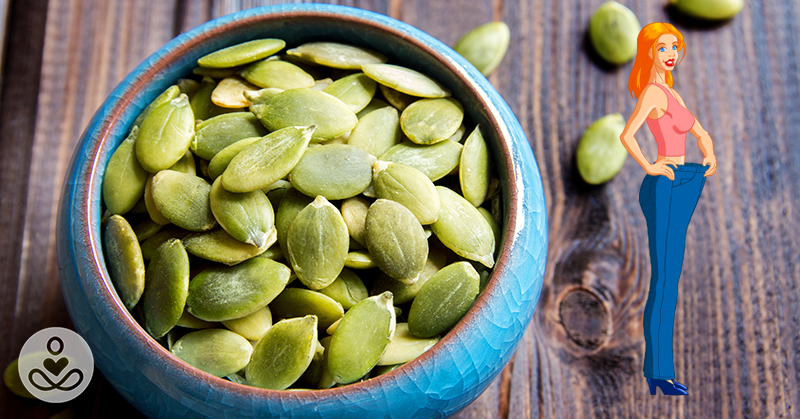Protein is the celebrity of macronutrients; you will rarely hear a bad word spoken about protein, unlike the other macronutrients carbs and fat. Protein is revered, and we are all told to make sure we are getting enough. When we think about protein for many of us, our first thoughts turn to animal products, but there are lots of vegetarian options that are high in protein.
Eggs are a good source of protein and nutrients but if relied on too heavily it can result in the development of sensitivity or allergy, this happened to me a year ago, and I had to take a long break and do some gut healing before I could have them again.
It is, therefore, a good idea to have other options on the table to help us get the right amount of protein in our daily food intake. Before we get into those foods, we should first discuss some important information about protein: what is protein, why do we need protein and how much protein should we be getting.
What is Protein?
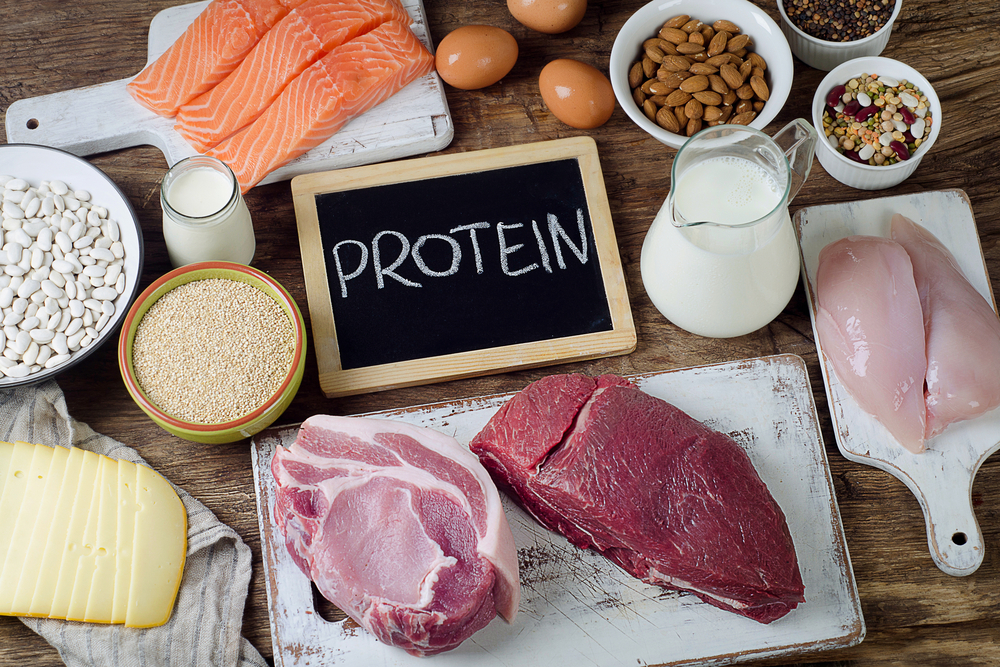
Let’s think of protein as a long string of pearls. Each one of those pearls in the string is an amino acid. When protein is digested, we end up breaking a part that string of amino acids into individual amino acids. Therefore, if we take a group of amino acids and string them together, we end up with protein.
Each amino acid plays a different role and can do amazing things, for example, an amino acid called phenylalanine ends up as dopamine, a neurotransmitter that makes us happy. There are two types of amino acids, essential and non-essential.
Now non-essential doesn’t mean that we don’t need them it just means we can create them ourselves from the essential amino acids. They are called essential because we must get them from our diet, and we can make the remainder, non-essential, ourselves.1
Read More: 21 Incredibly Healthy and Affordable Foods
Why Do We Need Protein?
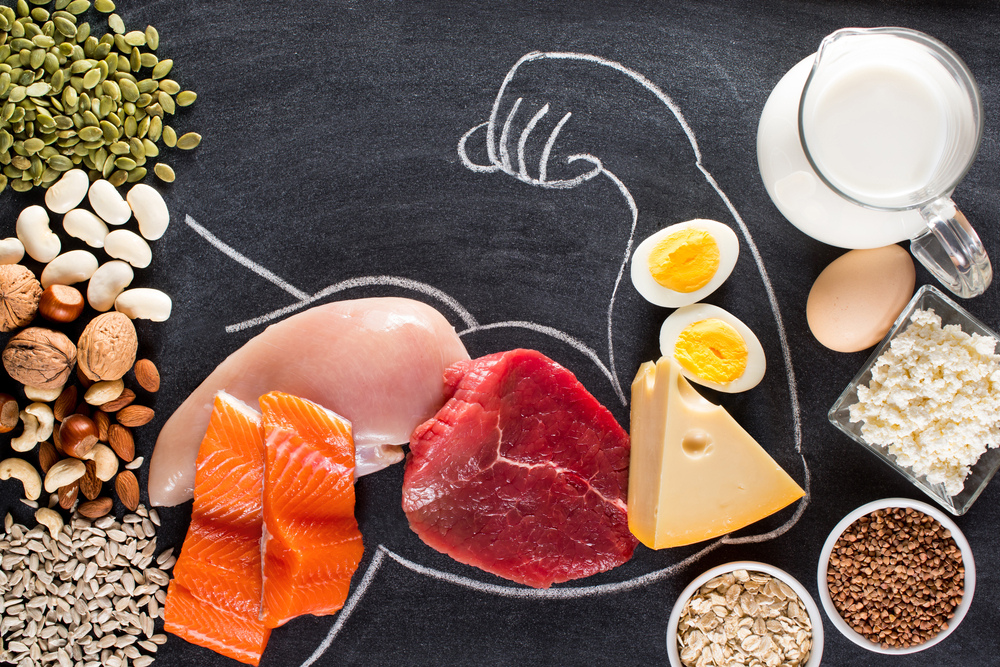
We need protein for many reasons, without it we would fall into poor health, and our body would start to break down muscle tissue to get the amino acids we need to survive.2
Protein’s arguably most well-known role is its ability to help with repairing and building muscle mass.3 This is why protein supplements have become such a large industry. Protein, as I mentioned creates neurotransmitters like dopamine, serotonin, melatonin to name a few.
These neurotransmitters send signals around the body, and without them, we wouldn’t be able to function. Protein is also needed to make antibodies, hormones4, and enzymes, they also help transport substances around the body.5 Protein is clearly essential for optimal health without it our body would not be able to function.
How Much Protein Do We Need?
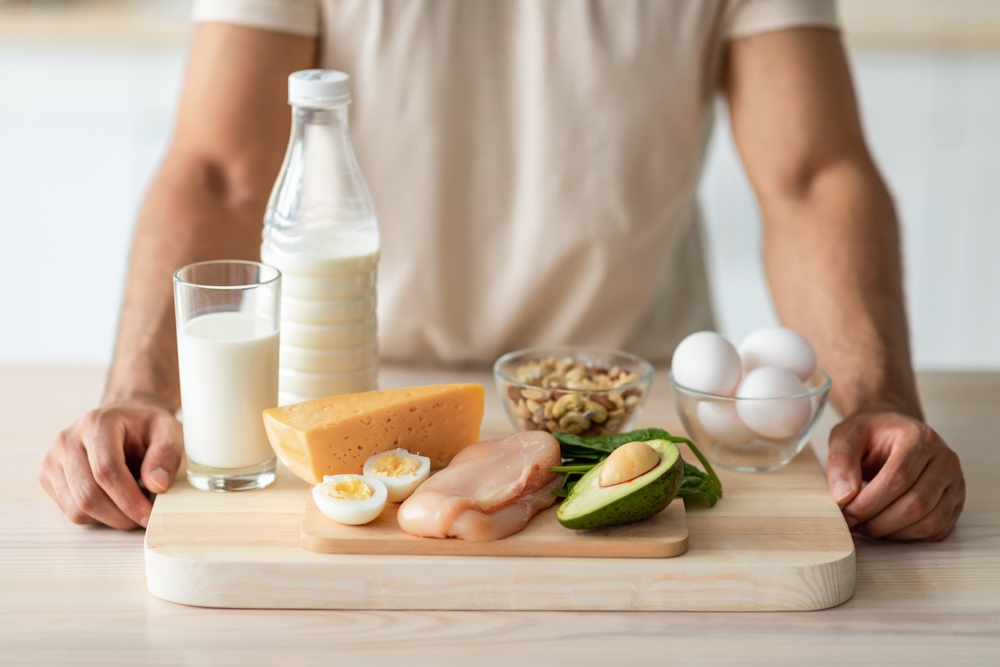
We want to ensure we are getting enough protein so we can give our body’s the resources they need. However, many of us are on the other end of the spectrum of getting too much protein; I was certainly here a couple of years ago until I realized what it was doing to me.
I was paleo at this time and was eating an excessive amount of meat which was giving me too much protein and making me acidic. I also didn’t realize that I was also getting protein from my vegetables (ex. Broccoli is 20% protein!). This ended up putting a large strain on my liver, and I didn’t feel very well until cut down on my protein consumption.
Since we want to get enough but not too much protein, we need to establish what range we should be between when it comes to protein. The World Health Organization (WHO) recommends a minimum of at least .13g/lb of protein per bodyweight every day to stay alive and prevent muscle wasting. WHO official recommendation for protein consumption is .30g/lb.6
My personal recommendations are a little bit different, I recommend consuming between .2g – .8g/lb of protein per day.7,8,9 Where you are in this range depends on a variety of things like physical activity frequency, type, duration, age, goals, etc.
For example, the protein requirement for elderly people is slightly higher than the average consumption recommendation by the WHO.6 However, being within .2g/ – .8g/lb is a safe range and determining what is best for you in that range may take some time to figure out.
The reason that the upper range is .8g/lb is that going over this can lead to unneeded stress on our liver. When we metabolize protein one of the results is ammonia which needs to be converted in the liver to urea which we can excrete. Too high of a protein intake can cause undue stress on the liver.10 Our liver has a lot of functions to do, therefore, for optimal health, we want to keep our liver happy and not overburdened.
How Can We Get Protein?
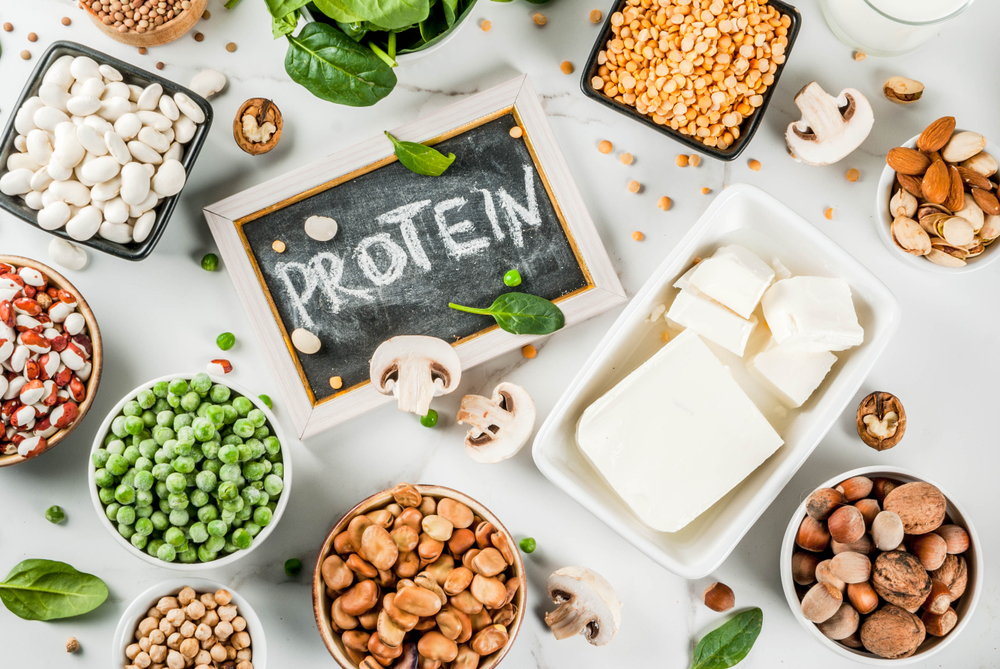
There are many good sources of protein in the food world. The most well known are animal products like meat, fish, and eggs. When consuming any of these foods we want to look for the best quality possible as animals can store toxins in their fat, therefore, the healthier the animal, the healthier the products.
I believe we as a society currently intake too much animal products in search of protein and that there are a lot of great plant sources that we may not be aware of.
Now I’m not saying you need to go vegetarian or vegan, but I do believe we all have a social duty to cut down on the consumption of animal products due to the impact it has on the environment through greenhouse gasses and water consumption.11 Plus, you can still get all your protein from plant sources, check out the list below of 10 foods that have more protein than an egg.
10 Foods That Have More Protein Than An Egg
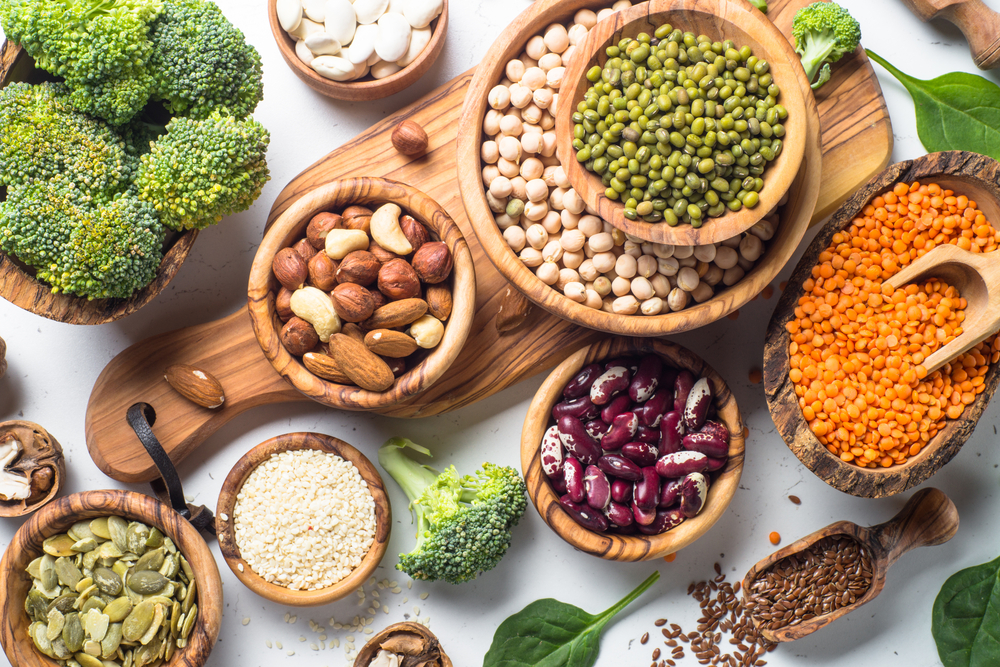
When comparing the foods below, they all have more protein than an egg on a gram to gram comparison in an edible form. That is to say, 1 egg is typically about 50g and has 6g of protein all the foods below have more protein per 50g. 12 & 13
1. Almond Butter
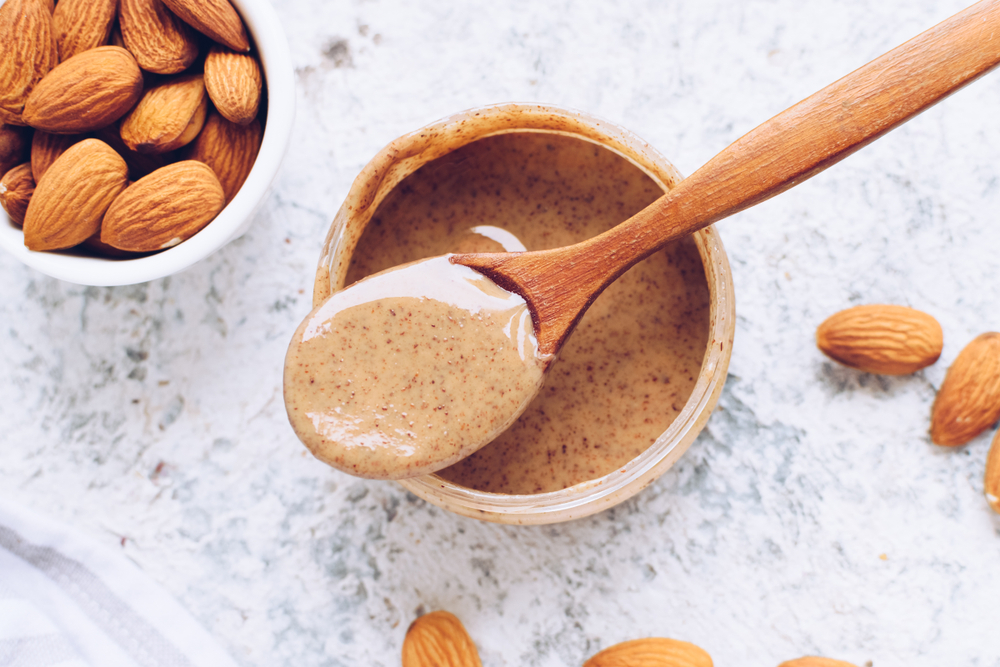
Has 10g of protein per 50g. It is also a good source of healthy fats, biotin, vitamin E, and manganese. Great to add to smoothies.
2. Hemp Hearts
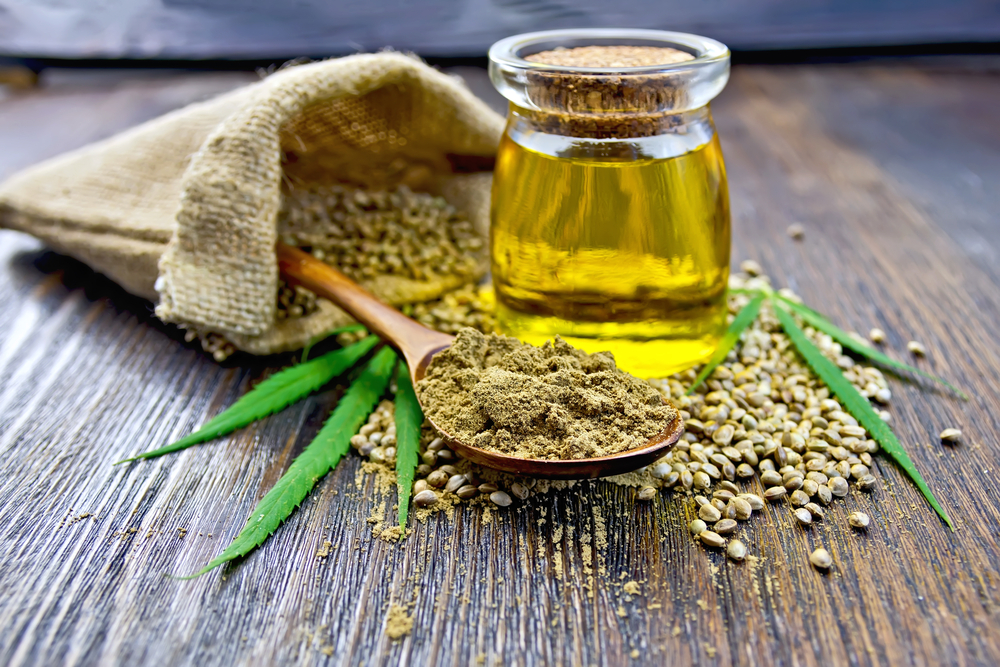
Have 16g of protein per 50g. They are also a great source of omega-3 fats, and no they won’t get you high. They are great to integrate into smoothies or to sprinkle on salads!
3. Pumpkin Seeds
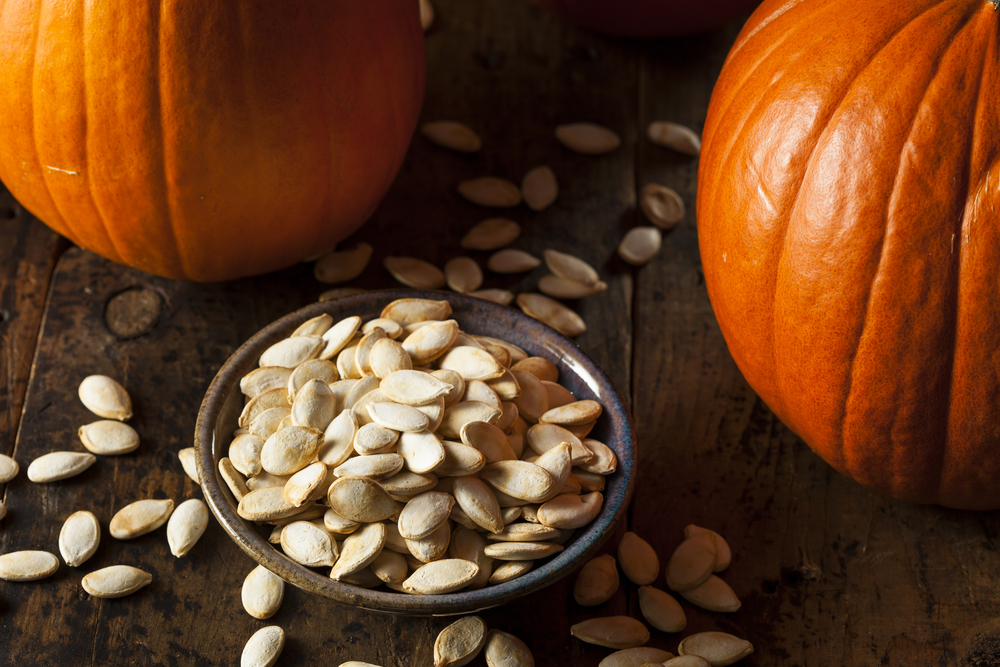
Have 8g of protein per 50g. They are a great source of magnesium which is needed for energy utilization in our body. They are also excellent at helping to kill parasites! I love using pumpkin seeds as a snack or in salads to add a nice crunch.
4. Nutritional Yeast
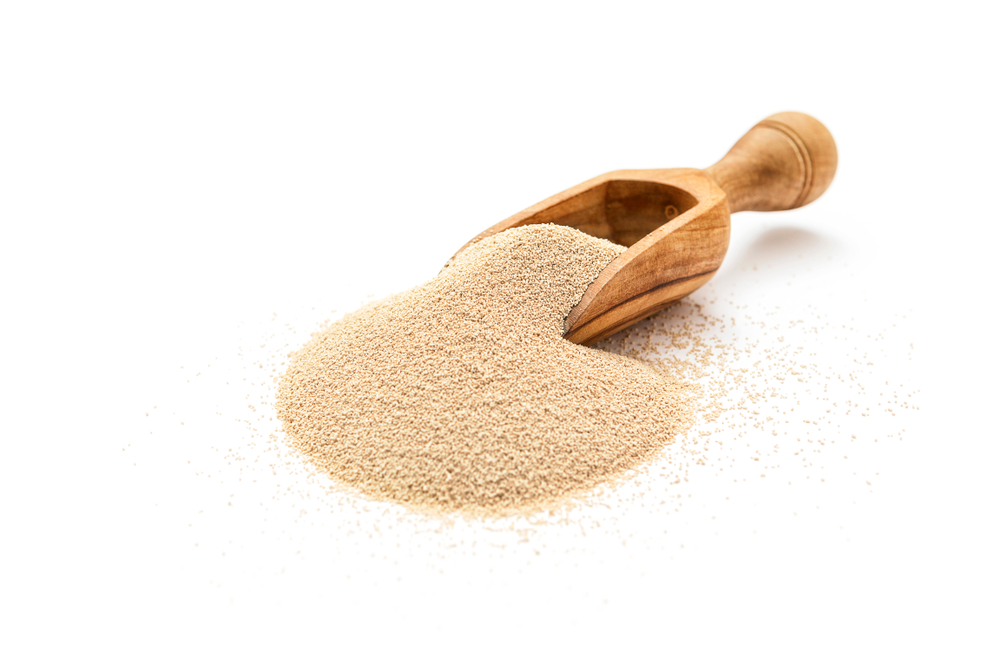
Has a whopping 25g of protein per 50g. Nutritional Yeast also is known as Noosh is also a good source of B-12. It has a nice cheesy and nutty flavor, it is delicious on salads and pretty much everything.
5. Dulse
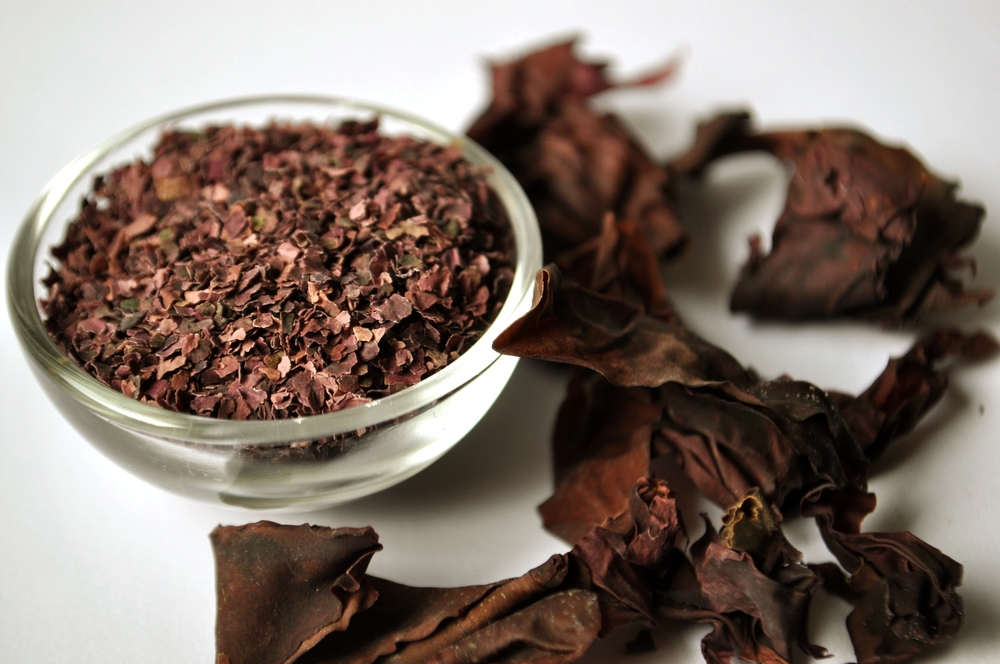
16g of protein per 50g. Dulse is a sea vegetable it has a high protein and fiber content; it is also very high in potassium and a good iodine. It can be used in soups, salads or to make wraps.
Read More: 32 Signs You Have a Magnesium Deficiency & The Foods You Need to Start Eating Immediately
6. Chlorella
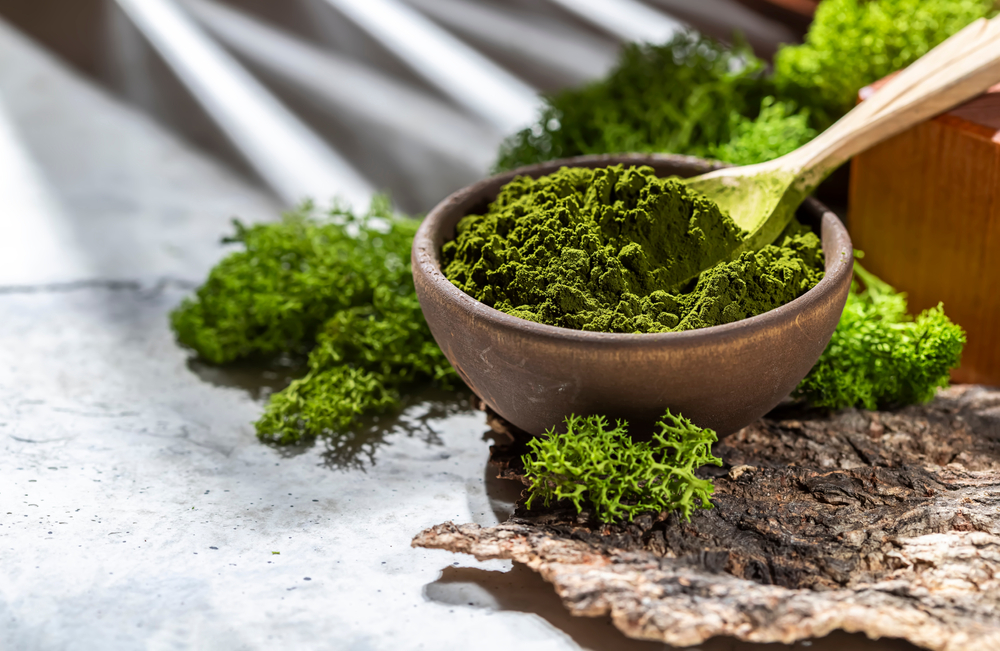
Has a 29g of protein per 50g. Chlorella is a superfood, and it is algae that can be used to help with heavy metal detox. It is filled with amazing nutrients like vitamin A, calcium, iron and magnesium to name a few. In my experience, it isn’t the tastiest so best to use in small quantities in a smoothie or greens shake or mix with water and drink!
7. Spirulina
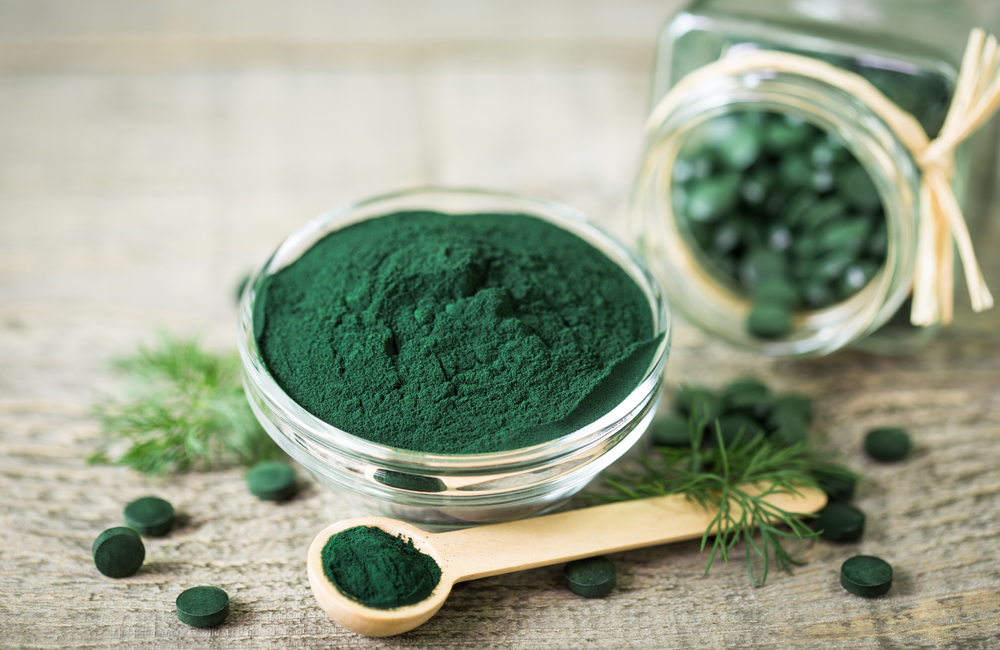
Has 28g of protein per 50g. This is another type of algae and superfood. Like chlorella, it also helps with heavy metal detox and should be used the same way, or you may ruin your smoothie, but the benefits are ample! It is high in vitamin K, potassium, magnesium and good levels of B vitamins.
8. Cacao Nibs
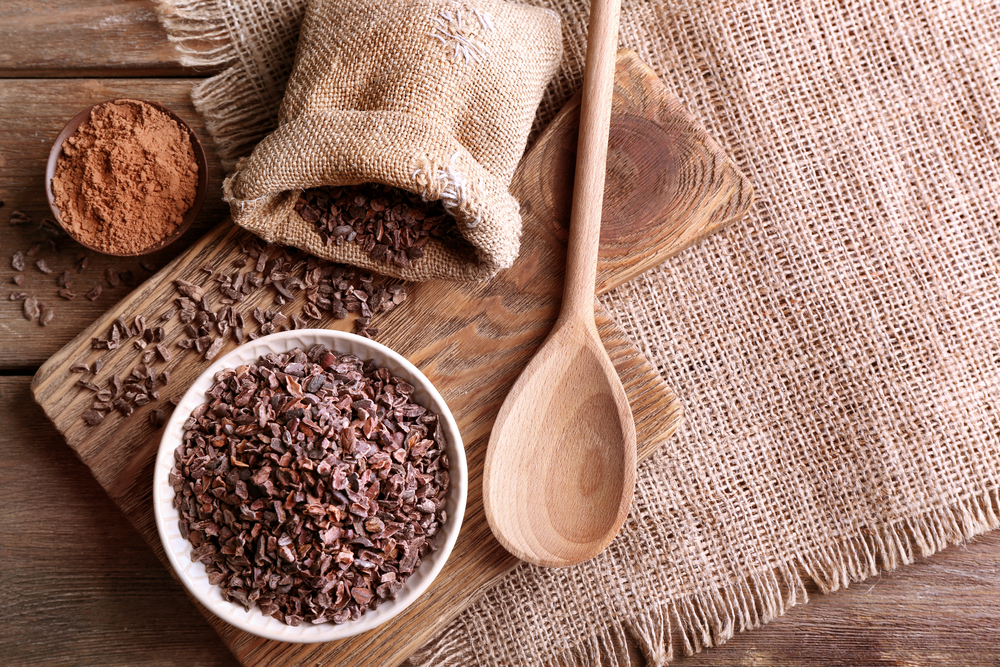
Have 7g of protein per 50g. Cacao differs from cocoa because it still has the living enzymes in tact which is beneficial for digestion. Cacao is also considered a superfood due to its high fiber content, high magnesium, and calcium plus it help to boost mood! Great to have as a snack when feeling peckish.
9. Flax Seeds
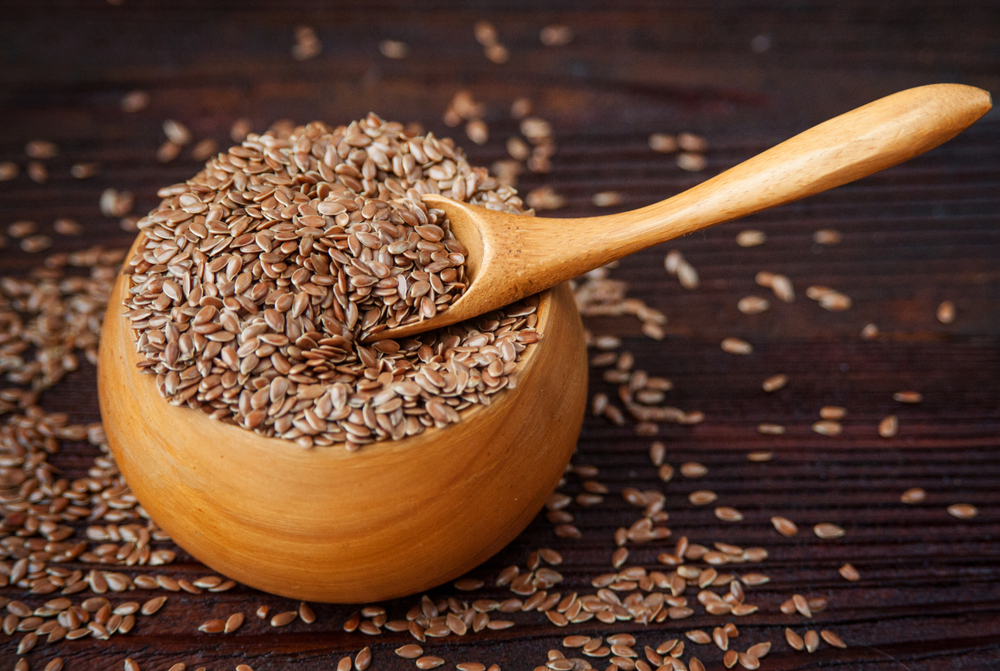
Have 9g of protein per 50g. They are also high in omega-3 helping to lower inflammation and a good source of fiber to help keep us regular. When consuming flax, we want it to be ground so we can digest it but it should be ground fresh to help preserve the oils. Good to use as an egg substitute in baking or can throw in a smoothie.
Try making this delicious Gluten-Free Maple Zucchini Bread with Coconut Flour and Flax Seeds!
10. Tahini
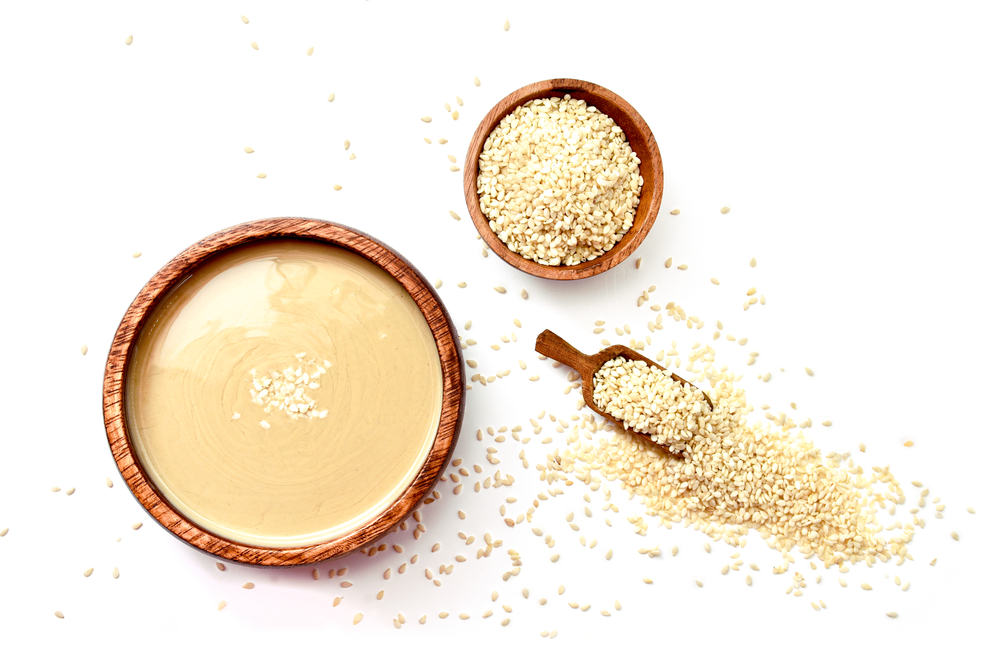
Has 10g of protein per 50g. Tahini is roasted and crushed sesame seeds. Sesame seeds are a powerful anti-inflammatory and contain a good number of vitamins and minerals like magnesium, zinc, and manganese. Tahini is great to have with steamed veggies like broccoli and cauliflower, yum!
Conclusion
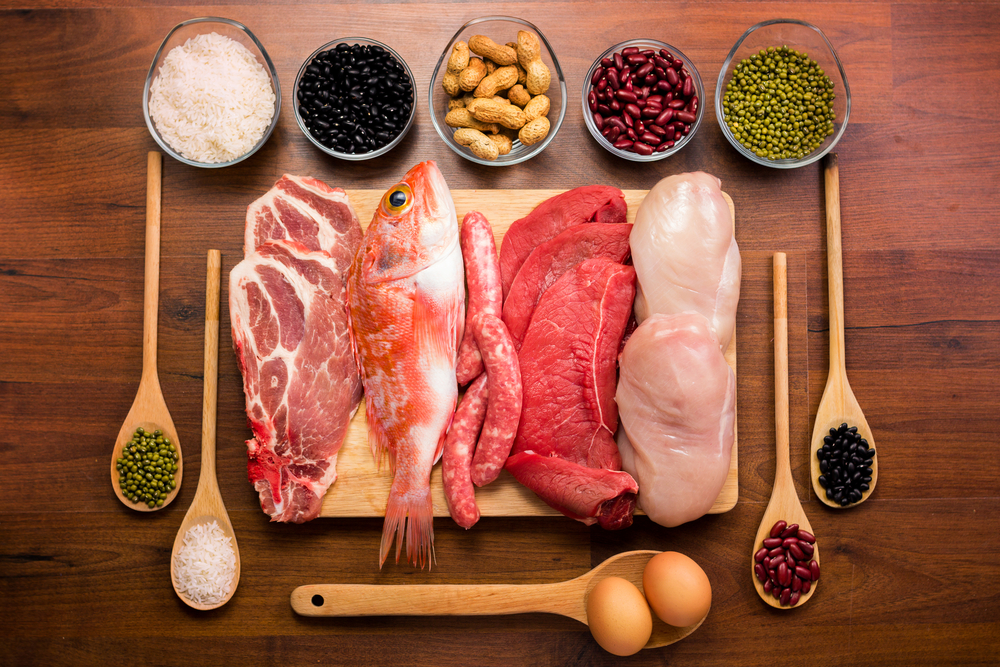
Protein is important for so many reasons and having enough protein between .2-.8g/lb per day is important to help keep us feel vital and amazing. There are lots of great options and sources of protein that do not have to be animal based such as the ten foods listed above.
There are so many benefits to integrating more plant sources of protein into our lives such as more fiber intake and more vitamins and minerals. Try out some of the foods above and let me know how it goes!
Read More: 9 Foods You May Have To Stop Eating As You Get Older
Sources
- Elena Volpi, et al. Essential Amino Acids are primarily responsible for the amino acid stimulation of muscle protein anabolism in healthy elderly adults. American Journal of Clinical Nutrition. 2003 Aug: 78(2): 250-258. https://www.ncbi.nlm.nih.gov/pmc/articles/PMC3192452/
- Phyllis A. Balch. Prescription for Nutritional Health. 5th ed. New York, NY: Penguin Books; 2010.
- Michael Murray and Joseph Pizzorno. The Encyclopedia of Natural Medicine. 3rd ed. New York, NY: Atria Paperback; 1998.
- Olivier Mirabeau, et al. Identification of novel peptide hormones in the human proteome by hidden Markov model screening. Genome Research. 2007 Mar, 17(3): 320-327. https://www.ncbi.nlm.nih.gov/pmc/articles/PMC1800923/
- Patrick Holford. The Optimum Nutrition Bible. London, UK. Piatkus books. 2004.
- World Health Organization. Protein and amino acid requirements in human nutrition. 2007. https://apps.who.int/iris/bitstream/10665/43411/1/WHO_TRS_935_eng.pdf?ua=1
- Phillips SM and Van Loon LJ. Dietary protein for athletes: from requirements to optimum adaptation. Journal of Sports Science. 2011;29. doi: 10.1080/02640414.2011.619204.
- Phillips SM. Protein requirements and supplementation in strength sports. Nutrition. 2004 Jul-Aug;20(7-8):689-95.
- Elango R, et al. Evidence that protein requirements have been significantly underestimated. Current Opinion in Clinical Nutrition and Metabolic Care. 2010 Jan;13(1):52-7. doi: 10.1097/MCO.0b013e328332f9b7
- Antonio Jorda, et al. Long-term high-protein diet induces biochemical and ultrastructural changes in rat liver mitochondria. Archives of biochemistry and biophysics. 1988 Sept:265(2):241-248.
- Gowri Koneswaran and Danielle Nierenberg. Global Farm Animal Production and Global Warming: Impacting and Mitigating climate change. Environmental Health Perspectives. 2008 May; 116(5):578-582.
- SELF Nutrition Data. Condé Nast. https://nutritiondata.self.com Accessed February 8th, 2017.
